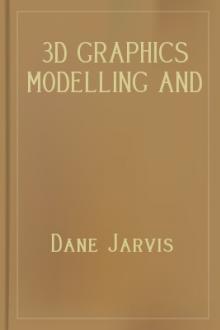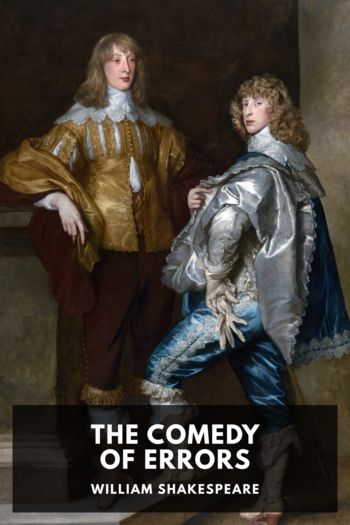Villages John Updike (classic books for 11 year olds .txt) 📖

- Author: John Updike
Book online «Villages John Updike (classic books for 11 year olds .txt) 📖». Author John Updike
In Haskells Crossing, it is Julia who loves the women. She finds reality and comfort in their company—at bridge, on committees, in the seasonal cycle of parties all catered with the same six hors d’oeuvres by the same dignified family firm. Julia fits in, so snugly that Owen feels like a spare part. He is the husband, a figment to be evoked when she deals with male plumbers, carpenters, tree surgeons, lawn caregivers. “They resent dealing with women,” she confesses, “so I say you say this and that, and they perk right up.” In her feminine coffee-klatches, husbands are described as balky appliances, comically absent-minded and inept. Feminism has brought with it a cheerful misandry. Male refusal to ask questions when lost, male blindness to the most glaring facts of decor and dress, male inability to distinguish zinnias from phlox, or the refrigerator from the broom closet, male clumsiness at the simplest home tasks, and even, when the vermouth had been flowing, male sexual demands, so impatient, primitive, and lacking in stamina—these are merrily mocked. The genteel social surface of Haskells Crossing is gender-riven, and Julia likes it that way. That a married couple share a bed as well as a bank account is assumed but made little of. Husbands, who at meaner economic levels generate dependency and fear by rages and beatings, are here tamed by the impossible cost, in an old age rich in jointly owned savings and equities and real estate, of divorce. Husbands are superfluous, dutiful adjuncts to the busy interaction of women. Owen has no trouble accepting such a role, since his own father had struck him as similarly pathetic and unnecessary.
iv. Village Sex—II
It had been his father who had successfully urged him to get a practical, scientific education. Floyd Mackenzie’s experience of the Depression had been that engineers were the last people to be fired; he had seen it happen. “The kid needs to latch on to something practical,” he announced. “He’s in danger of dreaming his brains away.” The boy’s brains—demonstrated by stellar high-school marks and his ability, during his years of rural isolation, to entertain himself with books and pencil and paper—could be, he reasoned, best engaged by machinery, if not by the giant knitting machines, as long and heavy as freight cars, whose ill-rewarded servant he himself had been, then by some other kind of construction (bridges, dams, dynamos) whose indispensable utility was more obvious to the world than that of strict, honest accountancy. In a materialist age, matter must be trusted. As events proved, the machines of the future were to be lightweight—rockets leaving earth’s gravity and computers quicker than human minds, adjuncts of human subjectivity freeing us into an oxygenless space.
An institution in far-off Massachusetts, a so-called Institute of Technology, offered Owen a scholarship. His being a student from a small rural school system, in a Middle Atlantic state, helped his chances with the bestowers of admissions and student aid. He never saw MIT before he got there. The buildings were set back from an artificially broadened river, the Charles, across from a venerable city, Boston, that held at the summit of a cut-down hill a sallow gold dome from under which the Commonwealth was governed. In the early ’fifties, pre-war shabbiness still ruled Cambridge and Boston, yet they were cities of youth, of students eager to make a future. Sailboats and rowing sculls rippled the river, a glittering sporting site bluer than the Schuylkill, which had been black with coal silt. This Commonwealth seemed toylike and polychrome, compared with the industrial scale of Pennsylvania—its sooty cities built on grids, its row houses climbing the hills like stairs. Boston in its oldest parts was laid out not on a grid but on a pattern, it was said, of ancient cowpaths, widened by Puritan footsteps and then paved in cobblestones.
Back Bay, a filled-in marsh, did form a grid, with a grassy central mall ornamented by elms and bronze statues. A long and windswept bridge misnamed Harvard Bridge connected Back Bay with MIT, its hovering pale dome eerily evoking, from across the river, the flying saucers from which, in those days, extraterrestrial creatures were supposedly spying, with impotent solicitude, upon a benighted planet about to blow itself up with atomic bombs. MIT seemed heroic in the grand and mazy scale of its vast central building: a series of buildings interconnected by passageways, each segment known not by a name but by a number. The main entrance, numbered 77 Massachusetts Avenue, led into Building 7, where six great pillars and a high circumcameral inscription to INDUSTRY, THE ARTS, AGRICULTURE, AND COMMERCE upheld the limestone dome. Fabled Building 20, the “plywood palace” on Vassar Street, had sheltered secret radar researches by which, it was said, the Second World War had been won. Underground infusions of government and corporate wealth continued to enlist scientific intelligence in the Cold War. In the analysis center and the digital computer laboratory—rooms entirely taken up with arrayed cabinets full of wires and vacuum tubes, fed by punched cards—all the radar stations around the United States were linked, undergraduate rumors claimed, and electric circuits calculated missile trajectories that a hundred savants with pencils could not compute





Comments (0)